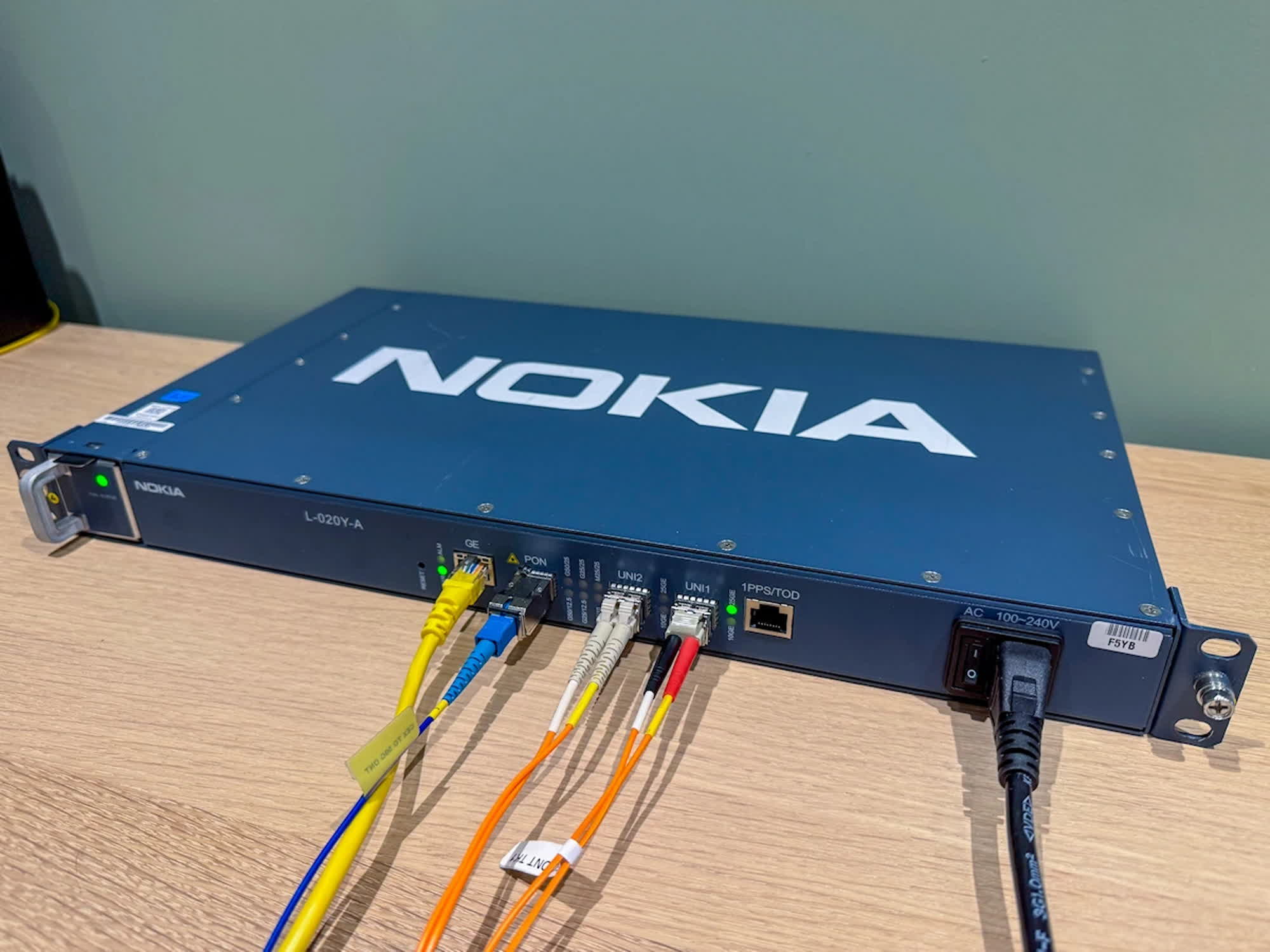The big picture: Openreach Limited is the organization responsible for managing the telephone and fiber infrastructure owned by BT Group. The company connects nearly all homes and businesses in the UK to broadband and phone networks, and is currently planning a significant upgrade to its internet performance. The question now is: when will customers be able to pay for a “real” 50Gbps internet connection service?
Openreach and Nokia have successfully tested what the two companies call the first “live” 50Gbps-class broadband connection from a residential location in the UK. The test took place in Ipswich, Suffolk, where the infrastructure company achieved actual speeds of 41.9Gbps downstream and 20.6Gbps upstream.
Currently, Openreach uses Gigabit Passive Optical Network technology for its fiber-to-the-premises internet service, which reaches over 17 million premises in the UK. A GPON network can provide up to 2.5Gbps downstream and 1.24Gbps upstream speeds on each trunk line, which is why internet companies are now deploying new XGS-PON kits to offer up to 10Gbps over their “dark fiber” infrastructure.
Openreach plans to launch its first 1Gbps connections based on XGS-PON around April 2025, but this new test demonstrates how far internet connectivity could go in the (hopefully) not-so-distant future.
The company used Nokia’s 50G PON fiber kits linked to BT’s fiber infrastructure. According to Director of Network Technology Trevor Linney, the trial and Nokia’s XGS-PON-ready equipment should serve as proof that Openreach is actively working to enable a generational leap in internet connectivity for UK customers.

Meanwhile, Nokia highlighted its ability to increase network capacity in a flexible and efficient manner. The company’s kit can support PON connectivity technologies up to 10Gbps, 50Gbps, and even 100Gbps, should the need for such speeds arise in the future.
Openreach stated that 50Gbps internet speeds would be beneficial in various use cases, including remote virtual and augmented reality, 8K video streaming, high-fidelity teleconferencing, and much more. Generative AI is also part of the equation, with the ability to better synchronize and train GenAI models over the network.
According to telecom analyst Paolo Pescatore, 50Gbps FTTP connectivity is likely still far off, but preparations should begin now. Users and companies are developing “insatiable” appetites for data consumption, Pescatore noted, so a robust and capable network will be essential moving forward.
Source link